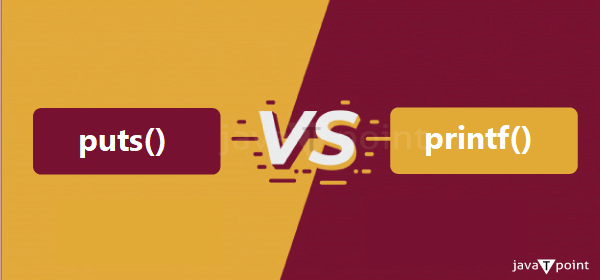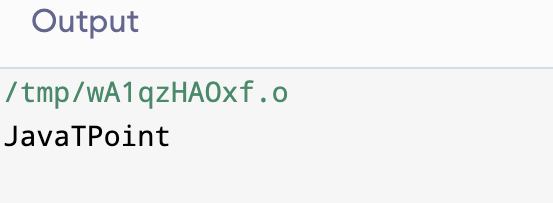Difference between puts() and printf() for printing a string in C7 Jan 2025 | 3 min read The C header file defines the puts() and printf() functions, which print a string on the console. In this article, we will discuss difference between puts() and printf() method in C. But before discussing their differences, we must know about the puts() and printf() method. What is the puts() Function?When writing a string to the console, the puts() function automatically appends the new line character "\n". Syntax:It has the following syntax: Parametersstr: It accepts as input a string that is null-terminated. Return Value
What is the printf() Function?In addition to printing data to the console, the printf() method can print formatted data based on a given format string. Syntax:It has the following syntax: Parameters
Return Value
Efficiency:
Formatting:
Usage:
Which of the following two should be preferred?For printing a string, puts() may be preferable over printf() since it is typically less expensive (puts() implementation is typically simpler than printf()), and printf() may produce unexpected results if the string contains formatting characters like '%s'. Moreover, using printf() on a user-input string str could lead to security problems. Keep in mind that puts() advances the cursor to the following line. Use the following puts() variation if we do not want the cursor to advance to the next line. fputs(str, stdout) Main differences between the printf() and puts()There are several differences between the printf() and puts() in C. Some main differences of these functions are as follows: 
Example 1:Output:  Example 2The below C program demonstrated the use of fputs. Output:  Example 3The below C program demonstrates the unexpected behavior when %s is used in the printf() function. Output:  Next TopicC Programming Test |
A jagged array (also referred to as "ragged arrays" or "array of arrays") in the C programming language is an array of arrays in which each element of the primary array is a reference to another array rather than a fixed-size component. It enables the...
3 min read
In this article, you will learn about the difference between Sentinel and Counter Controlled Loop in C. But before discussing their differences, you must know about the Sentinel and Counter Controlled Loop. What is the Sentinel-Controlled Loop? A loop in which the execution continues until a particular...
6 min read
A collection of characters, keywords, identifiers, operators, and other components known as tokens. Programming languages like C use these tokens to create the syntax and organisation of their code. By dissecting the source code into these basic components, tokenization makes it easier for the computer...
5 min read
The computation of income tax is one of the most crucial concepts that people need to understand about personal finance. Understanding income tax calculation is essential for sound money management, whether you're pursuing higher education, working as a professional, or even starting your own business....
4 min read
In this article, we will discuss the C program to implement Levenshtein Distance Computing Algorithm. The matrix used to calculate the difference between two strings is called the Levenshtein distance or edit distance. It is described as the bare minimum of single-character modifications (replacements, insertions,...
4 min read
? Both #define and enum can be used to declare integer constants in C programming. But there are some instances in which enum is preferable to #define. Enum: Enums, which are user-defined data types made up of named constants, are also known as enumerations. They give names a means...
5 min read
In the operating system, directories can be organized in a variety of ways. Single Level Directory Structure is the most straightforward of them all. The root directory and the user are the only components of this kind of organization. A primary entry directory that places...
4 min read
In this article, we will discuss the superperfect number in C Programming with its implementation. What is the Superperfect Number? In mathematical theory, a "super-perfect number" is a concept that extends to the idea of perfect numbers. A superperfect number is any positive integer n such that...
2 min read
Bit manipulation is a fundamental aspect of programming, particularly in systems programming, embedded systems, and performance-critical applications. One common operation in bit manipulation is extracting specific bits from data. In the C programming language, extracting bits is efficiently handled using bitwise operators, allowing programmers to...
13 min read
The pthread_self() is a method in C programming language that is found in a library called pthreads (POSIX threads). This function is used to fetch the calling thread's unique identifier-Thread ID (TID). These TIDs are highly useful as different multithreaded applications can recognize itself using...
10 min read
We request you to subscribe our newsletter for upcoming updates.

We provides tutorials and interview questions of all technology like java tutorial, android, java frameworks
G-13, 2nd Floor, Sec-3, Noida, UP, 201301, India
